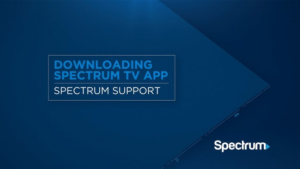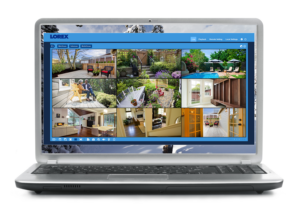ArrowOS is an open source Android custom ROM based on LineageOS. It aims to provide a clean, minimalist, bloat-free stock Android experience with useful customization options. ArrowOS focuses on stability and performance while keeping the UI close to stock.
ArrowOS is developed and maintained by a team of developers led by Shivam Kumar Jha. It started off as an AOSP based ROM for the OnePlus 5T before expanding device support. ArrowOS has grown to become one of the most popular custom ROMs in the Android community.
Features of Arrow OS
Pixel Experience UI
ArrowOS is based on Google’s Pixel UI to provide a consistent stock Android look and feel. It retains the core elements like launcher, dialer, settings etc. from Pixel Experience for a cleaner experience devoid of OEM skins. The UI offers smooth navigation, material design, and a lightweight interface.
Performance and Stability
ArrowOS focuses on optimization and stability with minimal bugs or random crashes, resulting in smooth performance. Animation speeds are faster, apps open quicker, and multitasking is snappier. Even older devices can benefit from the performance boost offered.
Battery Efficiency
ArrowOS incorporates battery enhancing tweaks like idle time optimization, screen-off and CPU control for improved backup. The battery stats allow monitoring usage for further optimization. Reviews note significantly better battery life compared to bloated OEM skins.
Customization Options
While the UI is minimal stock, ArrowOS allows ample customization like icon packs, themes, fonts, notification drawer layouts, accent colors etc. for personalization without affecting core stability. Additional features from Pixel phones are also added.
Latest Security Updates
ArrowOS aims to provide monthly security updates quickly after Google releases them to keep users secure. Users can get the latest security patches faster than most device manufacturers roll them out.
Lean Code and Updates
ArrowOS focuses on clean and optimized code for maximum efficiency. The ROM is only ~400MB in size. Lean code allows quicker boot ups. OTA updates are also frequent with new features, optimizations, and fixes.
Benefits of Using Arrow OS
Some of the major benefits of using Arrow OS include:
- Minimalist Interface The stripped down UI improves smoothness especially on low-end devices. Removing OEM bloatware enhances performance and makes navigation easier.
- Enhanced Battery Life Optimized software and controlled background processes result in improved battery standby time and backup. Users report getting extra hours of usage per charge.
- Snappy Performance Optimized code and lack of bloat provides visibly improved system responsiveness. Apps open quicker, animations are smoother, and multitasking is faster.
- Greater Control ArrowOS provides greater control over the interface customization and privacy settings compared to stock ROMs from device makers.
- Monthly Security Updates ArrowOS aims to push monthly security patches quickly to protect users from the latest vulnerabilities before vendors react.
Fluid Experience Reviews praise ArrowOS for its fluid performance and smoothness, rivaling expensive flagships. It breathes new life into older devices too.
Advantages
Some of the notable advantages of using ArrowOS include:
- Clean and minimalist UI for faster performance on most devices.
- Stripped down of bloatware for improved battery backup. Useful battery stats provided.
- Snappier performance with quicker app launches and smoother animations.
- Additional customization options for personalization without affecting stability.
- Regular and fast security updates for protecting privacy and data.
- Leaner code and frequent OTA updates with new features and fixes.
- Active Telegram groups provide quick troubleshooting and developer support.
- Unlocked bootloader allows installing other custom ROMs conveniently.
- Stable enough to be used as a daily driver with fewer bugs or random crashes.
- Revives old devices and extends their effective lifespan thanks to optimized software.
Drawbacks
However, there are some disadvantages as well to keep in mind:
- Risk of bricking device if installation is not done properly.
- Certain device-specific features like camera quality may get affected.
- Warranty may be void after installing custom firmware.
- Lacks all device-specific optimizations present in OEM skins.
- Doesn’t work well with some banking, DRM and streaming apps.
- Regular backups required before updating to prevent data loss.
- Need to re-flash recovery after installing OTA updates.
Installation Process
Here is an overview of how to install ArrowOS:
Step 1. Check if your device is officially supported. Refer to the installation guide for specifics.
Step 2. Backup personal data before proceeding. Also charge phone to at least 60%.
Step 3. Enable USB debugging in Developer Options and OEM unlocking in Settings.
Step 4. Obtain unlock bootloader permissions from the device manufacturer if needed.
Step 5. Download the latest ArrowOS ROM and OpenGApps package zip files.
Step 6. Boot into recovery, perform a factory reset and wipe data, cache and dalvik.
Step 7. Flash the ArrowOS ROM zip package first followed by OpenGApps.
Step 8. Reboot device and first boot will take some time to optimize apps.
Step 9. Customize the device and restore apps. Join Telegram groups for support if needed.
Developer Support
ArrowOS is led by developer Shivam Kumar Jha who started it for the OnePlus 5T. Sidharth Soni and Amartya Singh are also core developers. Many other developers contribute by maintaining device trees on GitHub.
ArrowOS code is open source allowing community contributions. Users can report bugs, suggest features and get quick support on Telegram channels moderated by developers and testers. Nightly builds allow rapid development.
The ArrowOS developers aim to deliver the pure AOSP experience combined with stability and customization options for enthusiasts. The team frequently adds new features based on user feedback while optimizing the ROM.
Best Custom ROM Alternatives
AOSP Extended
AOSP Extended provides a clean, stock Android experience with useful customizations. It offers features like theming, custom status bar icons, and UI tweaks while maintaining stability. With frequent updates, broad device support, and a smooth experience, AOSP Extended is a great pick for those seeking customizable stock Android.
Dirty Unicorns
Dirty Unicorns focuses on unique features and extensive theming options. With special functions like gestures, nav bar customization, and per-app theming, it allows deep UI personalization. While not as lightweight as some ROMs, its focus on customizable UI makes Dirty Unicorns stand out.
Xenon HD
Xenon HD aims to optimize and extend stock Android for customizability and performance. It provides interface theming, custom gestures, button options, and performance tweaks. With a lightweight feel and many extras over stock Android, Xenon HD hits a nice balance between features and stability.
Conclusion
ArrowOS offers an efficient way to enjoy clean, bloat-free Android particularly on older devices. With lean code and a focus on performance, it brings new life into phones. The active development community and Telegram support add to its appeal. However, as with any custom ROM, proper backup and installation precautions are required. But overall ArrowOS provides a solid, minimalist OS experience showing good potential for the future. It is certainly among the better custom ROM options available currently
F.A.Q
Q1. Is Arrow OS open source?
A1. Yes, Arrow OS is an open source custom ROM based on AOSP.
Q2. What is the best custom ROM for gaming?
A2. Some of the best custom ROMs for gaming are LegionOS, Corvus OS, and Pixel Experience.
Q3. Is custom ROM safe for banking?
A3. Custom ROMs if not properly audited can pose security risks for banking apps. Stock ROMs are safer.
Q4. What is the lightest custom ROM?
A4. Some of the lightest custom ROMs are Pixel Experience, CrDroid, and MSM Xtended.
Q5. Is Linux the only open-source OS?
A5. No, there are other open source operating systems like FreeBSD, ReactOS, illumos etc.
Q6. Which is free open-source OS?
A6. Some popular free and open source operating systems are Linux distributions like Ubuntu, Debian; BSD variants like FreeBSD; and Android.








